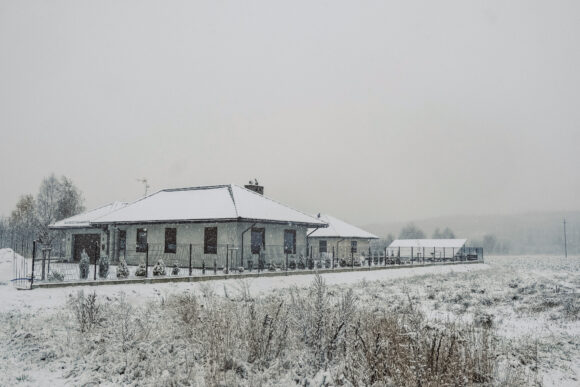The Arctic cold snap hitting Europe this week will be a test for thousands of Polish families that in recent years replaced coal furnaces with solar panels and heat pumps to heat their homes.
Temperatures are expected to drop to -5C (23F) later this week in Warsaw, almost 4C below average temperatures for this time of year. While Poland remains one of Europe’s most coal-dependent nations, homeowners are increasingly looking for cheaper and cleaner solutions.
“I used to burn coal,” said Jacek Owczarek, a 58-year-old resident of Lewkow, in central-west Poland. But when prices for the dirtiest fossil fuel jumped after the Covid-19 pandemic and Russia’s invasion of Ukraine, he switched to solar panels, with natural gas as a backup. “Now, because I produce twice as much electricity as I use, I’m adding a heat pump to the system.”
In Poland, solar and wind capacity have soared almost nine-fold in the past decade and renewables made up over 40% of the country’s power in 2024, according to BloombergNEF. The country is on track to triple its clean energy capacity by the end of this decade from 2023 levels, meeting a global target set by nations at the United Nations climate summit known as COP two years ago.
At this year’s climate meeting — COP30 in the Amazonian city of Belém — negotiators and ministers from close to 200 nations are debating how to meet that goal in time, possibly by developing a road map to exit fossil fuels. Tripling global renewable capacity by 2030 is crucial to reduce greenhouse gas emissions from burning fossil fuels and limit global warming to 1.5C above pre-industrial times, the target set in the Paris Agreement.
“For the past 10 years we have witnessed an absolutely incredible technological change,” said Michal Kurtyka, a former Polish minister for climate and the environment and the president of COP27, held in Katowice, Poland, in 2018. “The implementation of the Paris Agreement has contributed to reinforce certainty for businesses to invest.”
While the world is far behind on achieving most goals set at previous COPs, tripling renewables to about 11,500 gigawatts by 2030 can be achieved, researchers say. Last year, $2 trillion was invested globally in the clean energy transition, including renewables.
Current policies and cost trends will result in 9,530 gigawatts of global renewable capacity by the end of this decade, according to the International Energy Agency. If countries take action to resolve challenges with permitting, financing and grid connections, that pace could result in 10,400 gigawatts of renewables by 2030.
Poland is a case in point when it comes to the progress — and the challenges ahead. The government is heavily subsidizing solar energy, battery storage, heat pumps and home insulation, including through a 100 billion zloty ($27 billion) “clean air” program for its aging housing stock, built mostly under the Soviet regime before 1989. Poles have installed over 13 gigawatts of photovoltaic panels on their rooftops in the last seven years, helping them cut electricity bills.
The Russian invasion of Ukraine in February 2022 was a turning point, with Poland banning imports of the fuel from the east. After that, the price of coal skyrocketed and consumers went looking for cheaper alternatives. That year, the sales of electricity-powered heat pumps jumped to a record high. Shares of Polish heat pump and solar-system producer WIG20 soared 400%.
But that peak in heat pump demand has never returned. The country had around 745,000 installed heat pumps in 2024, far behind Europe’s leader, France, with a stock of 6.6 million, according to the European Heat Pump Association, an industry body. Sales were among the lowest in Europe, and fell from 2023. Overall, Poland managed to replace just under 500,000 of furnaces since 2019, according to a government website, leaving the country far from the government target of removing almost all coal-burning furnaces from households by the mid-2030s.
“The science is unequivocal,” said Salina Grenet-Catalano, director of global affairs at the French Ministry of Foreign Affairs, at an event on the sidelines of COP30. “Coal must be phased out in the next decade if we are to keep the temperature goals of the Paris agreements within reach.”
While heat pump demand is growing again, at the current pace it won’t be possible to reach the targets set in Poland’s climate plan, according to Pawel Lachman, head of the Polish Organization of Heat Pump Development. The lobby group has called for the government to improve subsidies and adjust electricity tariffs for the devices.
“The speed at which Poland has transformed is absolutely astonishing,” said Kurtyka. “But it’s necessary to have a bit of patience and that’s complicated in today’s world, given the targets we have set — but we must recognize things are advancing.”
Photo: Polish homeowners are increasingly looking to solar panels and heat pumps to heat their homes. Photographer: Damian Lemański/Bloomberg
Topics Europe
Was this article valuable?
Here are more articles you may enjoy.



 Pierce Named CEO of GEICO as Combs Resigns
Pierce Named CEO of GEICO as Combs Resigns  In Alabama, Shot Employee Gets No Workers’ Comp and No Employer’s Liability
In Alabama, Shot Employee Gets No Workers’ Comp and No Employer’s Liability  Baldwin Group to Buy CAC Group for About $1B in Cash and Stock
Baldwin Group to Buy CAC Group for About $1B in Cash and Stock  Surveys Show Concerns About Florida Market, But Consumers Are Warming Up
Surveys Show Concerns About Florida Market, But Consumers Are Warming Up 

